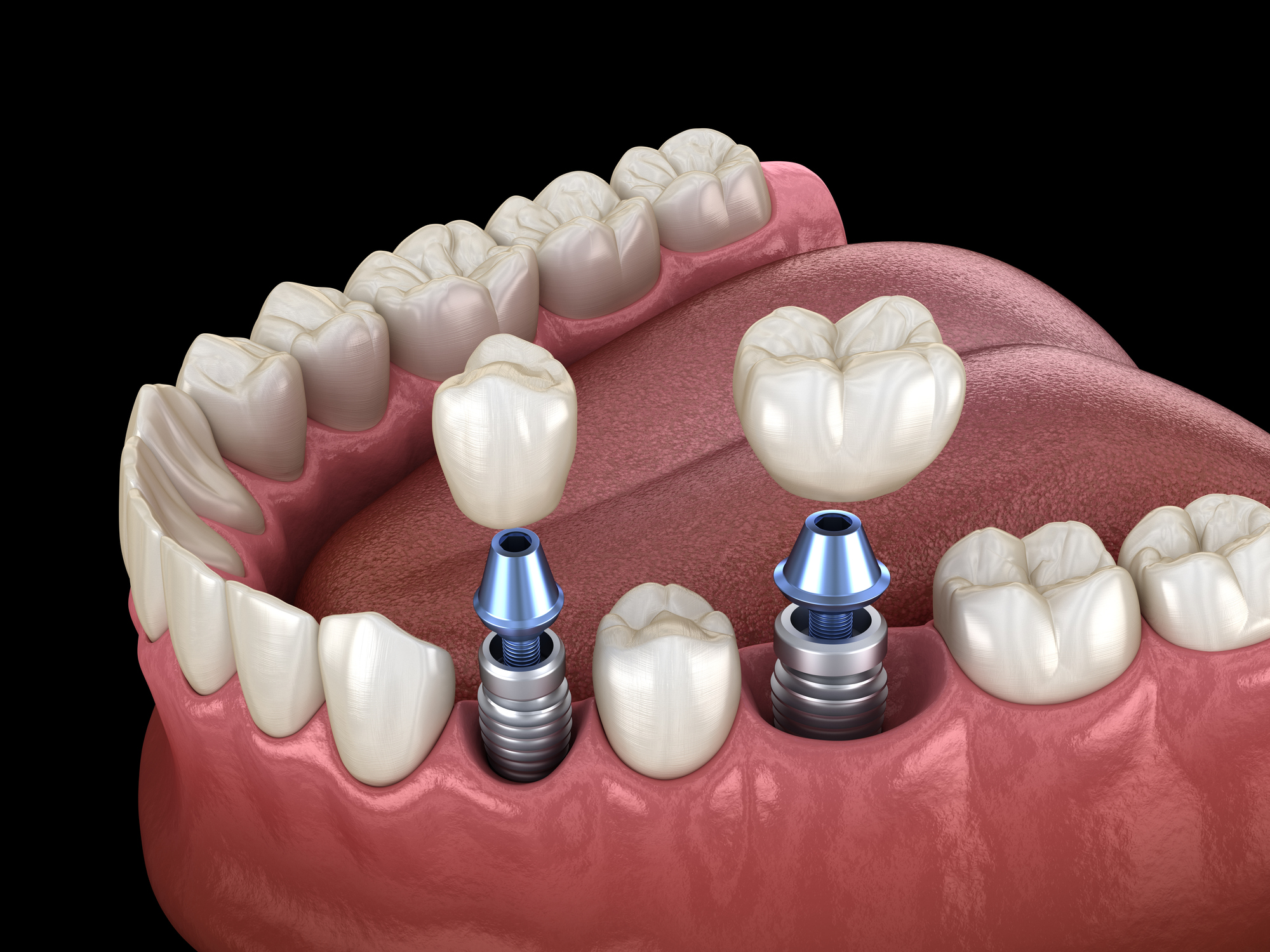Dental Sense - An Overview
Dental Sense - An Overview
Blog Article
The Dental Sense Diaries
Table of ContentsThe Dental Sense Ideas5 Easy Facts About Dental Sense ExplainedDental Sense for BeginnersThe smart Trick of Dental Sense That Nobody is Talking About
are clinical gadgets surgically dental implanted into the jaw to bring back a person's ability to eat or their appearance. They give assistance for synthetic (phony) teeth, such as crowns, bridges, or dentures. When a tooth is shed because of injury or condition, an individual can experience difficulties such as fast bone loss, defective speech, or changes to chewing patterns that lead to discomfort.Dental implant systems contain an oral implant body and dental implant abutment and may also include an abutment fixation screw. Dental implant vs bridge. The oral implant body is surgically inserted in the jawbone instead of the tooth's origin. The oral implant abutment is typically connected to the dental implant body by the abutment fixation screw and expands through gum tissues into the mouth to support the affixed artificial teeth
(https://hearthis.at/matthew-music/set/dental-sense/)Framework of The Oral Implant System selecting oral implants, speak to your oral company concerning the potential benefits and dangers, and whether you are a prospect for the treatment. Things to consider: Your total wellness is an important element in identifying whether you are a great candidate for dental implants, the length of time it will take to heal, and the length of time the dental implant may remain in area.
Smoking may influence the healing procedure and decrease the long-term success of the implant. The recovery procedure for the dental implant body may take a number of months or longer, during which time you generally have a momentary abutment in place of the tooth. the oral implant procedure: Carefully adhere to the dental health directions provided to you by your dental provider.
Our Dental Sense PDFs
Implant failing can lead to the requirement for another operation to deal with or replace the implant system. Restores the capability to eat Restores cosmetic appearance Helps keep the jawbone from shrinking as a result of bone loss Maintains the health and wellness of the bordering bone and gum tissues Helps maintain adjacent (close-by) teeth secure Improves lifestyle Damage to bordering natural teeth throughout implant positioning Injury to the surrounding cells throughout surgery, such as sinus perforation Injury during surgical treatment (for instance, fracture of surrounding jawbone) Poor feature, such as seeming like the teeth do not bite with each other usually A feeling that the tooth is loosened or turning in position arising from a joint screw loosening up Implant body failing (looseness of the dental implant body) because of systemic infection, which may be more probable in clients with uncontrolled diabetes because of local infection in bone and periodontals supporting the implant body because of postponed healing, which may be most likely in people that smoke Difficulty cleansing the gum tissues around the implant, resulting in poor oral hygiene Without treatment gum disease Post-surgical tingling due to nerve impingement or damage Constantly notify health and wellness treatment companies and imaging professionals that you have dental implants prior to any type of magnetic resonance imaging (MRI) or x-ray treatments.
FDA is not aware of any damaging occasions reported for MRI or x-ray treatments with dental implants. Oral implants systems are usually constructed from products that adhere to global agreement criteria of the International Company for Standardization (ISO) or ASTM International. These requirements have details of what makes a risk-free material.

An oral implant is a structure that replaces a missing out on tooth. With screw-like tools, the doctor inserts a dental implant right into the jawbone, and it works as an anchor for a synthetic tooth, called a crown. A tool called an abutment connects the artificial tooth to the dental implant. The crown is tailor-made to fit the person's mouth and match the shade of their teeth.
Our Dental Sense Ideas
Some individuals are not qualified for dental implant surgical treatment. It is for dental specialists to operate individuals with: acute illnessuncontrollable metabolic diseasebone or soft tissue condition or infectionIf these issues are settled, a person can have the surgical procedure. In, find out this here oral doctors refrain from running on people with: If individuals with any of the above undertake dental implant surgical treatment, there is a higher risk of the dental implant stopping working.

Dental dental implant surgical procedure is an individualized procedure. It's not the exact same for everybody. Yet the complying with offers a general overview of what you can anticipate your dentist, oral specialist, periodontist or prosthodontist to do: Put the dental implant operatively. Offer you time to recover. Affix the article and last crown, bridge or denture.
Next, your specialist will meticulously put the oral implant right into your jaw. Lastly, your cosmetic surgeon will rearrange your periodontals and close the cut with stitches. If your dental implant is near the front of your mouth, your dental expert will certainly make a short-lived tooth for you to use up until you heal. That method, you won't have a gap in your smile while you recover.
The Only Guide for Dental Sense
During the recovery stage, your jawbone should fuse to the dental implant. This process can take anywhere from 3 to nine months.
As soon as your implant heals, your dentist can attach the abutment (tiny adapter article) and your last restoration (crown, bridge or denture). This usually takes about one hour to finish and may need a second minor surgical treatment. You shouldn't really feel any kind of discomfort throughout your oral implant treatment since your copyright will certainly make use of drug to numb your periodontals.
Report this page